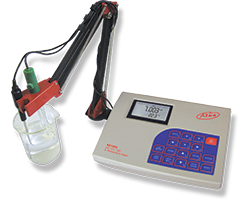Linseis – Differential Scanning Calorimetry – DSC
Differential scanning calorimetry or Differential Scanning Calorimeter (DSC) is a very widely used method for determining transformation temperatures and enthalpy changes of solids and liquids under controlled temperature changes.
With many years of experience, Linseis has developed a range of differential calorimeters, including the Linseis Chip-DSC series, as well as the classic DSC PT 1000 and DSC PT 1600 models, to meet the diverse needs of research, development, and quality control. These calorimeters operate across a temperature range from -180°C to 1750°C and can withstand pressures of up to 150 bar.

IDEAL FOR
- Tg (Glass Transition Temperature)
- Melting point
- Crystallization
- Phase transformation
- Curing (hardening)
- Curing kinetics
- Thermal stability and oxidation stability
- Ageing processes
- Purities
- Specific heat (Cp) and thermochromism
- Solidus-liquidus curves
All Linseis Differential Scanning Calorimeters (DSC) operate in accordance with the following national and international standards: ASTM C 351, D 3417, D 3418, D 3895, D 4565, E 793, E 794, DIN 51004, 51007, 53765, 65467, DIN EN 728, ISO 10837, 11357, 11409.
FEATURES
- Phase Transformations – Determination of melting and crystallization points, as well as phase transitions, by measuring the enthalpy change against temperature.
- Glass Point Determination – Measurement of the glass transition temperature (Tg) using high-resolution caloric detection.
- Measurement of Specific Heat Capacity (Cp) – Determination of the specific heat capacity (Cp) of solids and liquids using sapphire reference measurements.
- Enthalpy Determination of Chemical Reactions – Determination of the endothermic and exothermic enthalpy of reaction (ΔH) for chemical reactions.
- Measurement of Thermal / Oxidative Stability – Determination of the Oxidation Induction Time (OIT) under different gas atmospheres and pressures.
Possible Measurement Conditions of Linseis DSCs:
- Temperature Range: From -180°C to 1750°C
- Various Gas Atmospheres: Air, inert gases like nitrogen, helium, argon, etc.; reactive gases like forming gas, hydrogen, etc.; and vacuum.
- Pressure Range: From 10⁻⁵ mbar to 150 bar.









